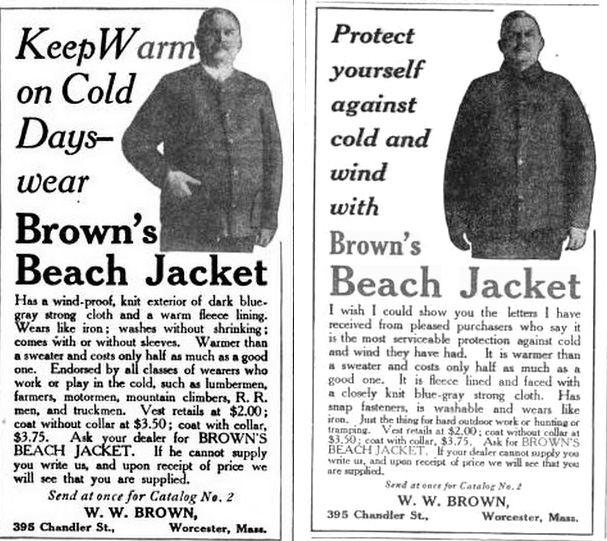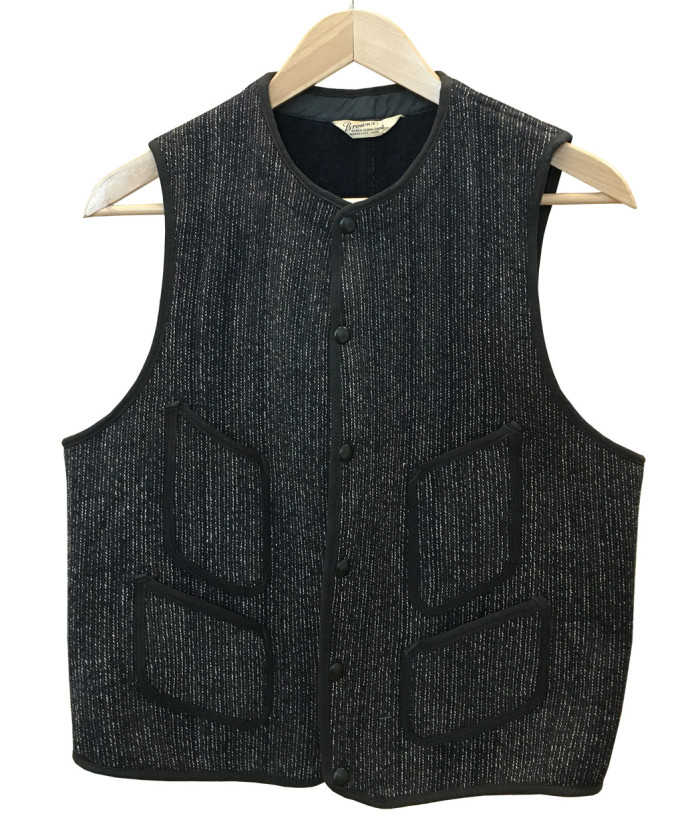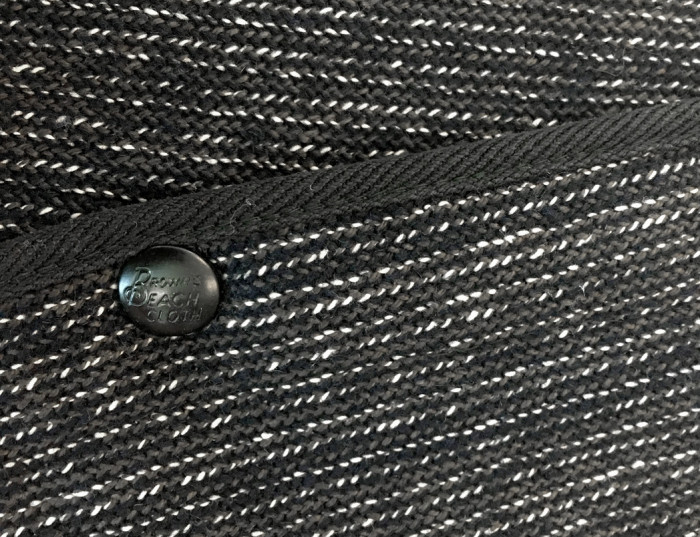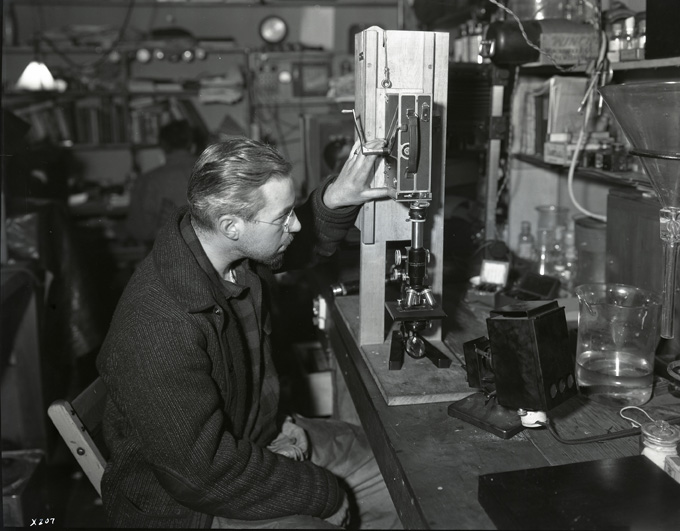Historically wool was one of the first fibers to be reclaimed. The fiber’s inherent properties made it easy to recycled. In the United States, demand for this material started to exceed supply in the early nineteenth century, which promoted the development of a recovered wool trade. At the time most of the recycled product was imported from Britain. Used woolen rags were first cut, shredded, carded, turned again into yarn often of less quality before being shipped to the USA where it would be used for army uniforms and blankets. This reclaimed wool was called “shoddy,” a term that later took a negative connotation of low-quality textile scrap.

Brown’s Beach Jacket advertisements with William W. Brown posing in his jackets, Farm Journal, November 1913.
In 1898 William W. Brown founded the Brown’s Beach Jacket company in Hartford, Connecticut before moving his manufacture to Worcester, Massachusetts in 1901. Skillful businessman, Brown was in charge of the manufacture, sales, and public relations, selling at the beginning only two instantly identifiable products: a man’s knit-like hip-length jacket and vest with metallic snap buttons in a mottled grey thick woolen fabric. Brown even became the face of the company by posing with his wool jackets and vests for advertising campaigns in the 1910s.

Vintage model of the Brown Beach Jacket’s vest, courtesy of Katie Duggan, 2016.
The manufacturer was famous for his signature fabric called “Beach Cloth” composed of blend of 30% cotton and 70% recycled wool. This knitted cloth integrated a navy blue fleece lining which guaranteed to keep extra warmth during cold winters. It took its name from Brown’s first business association in Hartford with the Beach Manufacturing Company that used to produce fleeced fabrics for underwear. Incidentally Barbara Duggan, former collection manager and active volunteer at the Textile Department at Cooper Hewitt, happens to be Mr Brown’s great great grand-daughter. She is the one who revealed that her ancestor’s company used post-industrial reclaimed wool to produce their fabrics, which allowed Mr Brown to sell his jackets at a very competitive price. The Brown’s Beach Jacket’s founder kept this information secret, as sharing such manufacturing practice may have been considered in a negative way.

Close-up on the Beach cloth, courtesy of Katie Duggan, 2016.
The Brown’s Beach Jacket was the quintessential outdoor garment: weather-resistant, unshrinkable, almost untearable, yet soft and comfortable. Thanks to their extreme durability, jackets and vests became staples in American workers’ wardrobe in the late 1910s, especially among fishermen, hunters and lumberjacks. The jacket’s reputation even came to the attention of Admiral Byrd who was preparing his second expedition to the South Pole in 1932. His team reached out to Samuel Brown, son of William W. Brown who had taken over the company in the early 1920s, who graciously provided a donation of thirty-six jackets and thirty-six vests for the expedition. Samuel Brown had difficulties managing the company and he eventually sold it to Jacob Finkelstein & Sons in Rhode Island who took over the brand development and production in the 1950s.

Member of the Admiral Byrd’s second expedition to the South Pole wearing a Brown’s Beach Jacket, c.1935, courtesy of the Ohio State University Byrd Polar and Climate Research Center Archival Program.
With the rise of synthetic fibers, the market for recycled wool suffered a major setback in the 1960s. In addition the International Wool Secretariat lobby advertised for “Pure New Wool” and “Virgin Wool” as premier products, which relegated the reclaimed material in the background. Since the late 2000s, Brown’s Beach Jacket has enjoyed a promising revival. Old pieces are selling for very high prices on the internet and Speedway, a Japanese retailer specialized in vintage menswear, has acquired the rights to replicate the original two-pocket jacket and four-pocket vest, giving this classic menswear items a new beginning.
On the occasion of Scraps: Fashion, Textiles, and Creative Reuse, MUJI has collaborated with Reiko Sudo from NUNO to produce a line of six garments and accessories in reclaimed wool. The Japanese brand has chosen to hire artisans from Aichi prefecture, the historic wool center of Japan, working according to century-old processes of wool repurposing by turning vintage clothing into reusable wool yarn.
About the Author
Magali An Berthon is a textile researcher and designer, focusing in particular on world textile crafts and sustainable fashion. After an MFA in textile design in Paris, she studied textile history at the Fashion Institute of Technology NY on a Fulbright fellowship in 2014. Since June 2015, she is a curatorial fellow at the Textile Department at Cooper Hewitt, Smithsonian Design Museum.
Scraps Stories
This post is part of the blog series Scraps Stories dedicated to exploring sustainable textiles and fashion, in relation to the exhibition Scraps: Fashion, Textiles, and Creative Reuse.
One thought on “Reclaimed Wool: Brown’s Beach Jacket”
LUIGI RAMPELLO on April 23, 2018 at 10:30 am
MOLTO, MOLTO ITERESSANTE E DI ESTREMA COMPETENZA.
COMPLIMENTI E GRAZIE